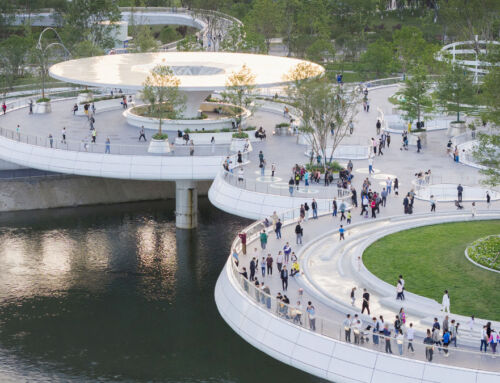“Gardeners (…) dedicate themselves to killing so that [their garden] looks beautiful”, said Gilles Clément, French landscape designer, gardener, botanist, entomologist and essayist, as well as professor at the Versailles School of Landscape Architecture, in an interview published in the weekly supplement of the newspaper El País. His critical statement, sums up perfectly the approach he treasures when it comes to creating gardens and landscapes. Although during his studies he learned “to kill”, Clément soon decided to look for another way of dealing with the diversity of nature.

In 1977, he bought a plot of land to “work without pesticides“. Thanks to his experimentation on this site (for example, he used nettle puree to control pests instead of artificial insecticides), the French landscape artist managed to establish that delicate balance on which his work has been positioned ever since: maximum diversity and movement with minimum intervention. One of the concepts he coined, and which responds to this approach, is that of the “garden in movement“.
In contrast to landscape spaces based on visual order and control over plant species, the garden in movement is a type of landscape that has a life of its own and is dynamic. In it, plants find a natural relationship with their surroundings and develop as freely as possible. In contrast, conventional landscape design is carried out artificially, for example by using computers to create fixed gardens. They are oblivious to the relationships between plants and their natural growth, they establish alignments, proportions and marked boundaries. In contrast, the garden in movement is one thing today and in a year’s time it will be completely different.

From Clément’s point of view, landscape design is only a starting point, and its intervention in the natural surroundings must be minimal. So, he never uses the expression “weeds“, but values the plant species that fall under this idea insofar as they have their own role in the natural balance. In any case, landscaping intervention will be only that which is necessary to prevent the landscape from becoming a wilderness, which cannot be enjoyed by visitors.
Another concept proposed by the French landscape designer, related to the previous one, is that of the “garden of resistance“. In this case, it is about that natural space that lives without the need for human help and the landscape associated with it. It is landscaping that does not require maintenance, that “does not entail an expense”, nor does it have the consequence that “the use of water soars”. It is, therefore, a “sustainable garden“, Clément insists in the interview with El País Semanal.


A final concept that landscaping and gardening owes to the French specialist is that of the “third landscape“. This is precisely the one that is formed in the marginal places that we humans abandon. For example, roadsides. The third landscape is now completely wild. The spaces that make it up are of great value to Clément, as they are the “refuge of the diversity” of nature.










